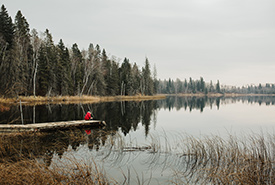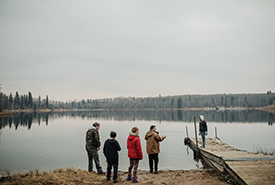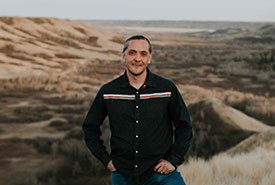The land is our identity

Treaty 4 territory, Qu'Appelle Valley, SK (Photo by Dane Roy)
Indigenous Peoples have lived on, cared for and maintained relations with the land we now call Canada for thousands of years. Their relationship with the land isn’t just one of sustenance and livelihood; it also encompasses a deep sense of community, spirituality and identity. Over the past 200 years, Indigenous connections to, and authority over, the land have been largely severed.
For a long time, I struggled with what being Indigenous meant. I knew that my grandfather was Kanien'keká:ka (Mohawk), but there had always been a spiritual disconnect between my culture and my identity. What did it mean to be native, and what responsibility did I have to my community and to Mother Earth?
It wasn’t until I stepped outside and into nature that I began to answer these questions. I found my identity on the land.
Related blog posts
In my position as the staff writer and content creator at the Nature Conservancy of Canada (NCC), I have the opportunity to help tell Mother’s Earth truth. By educating Canadians about the importance of nature, I hope to help foster a stronger future for landscapes and the species and life they sustain.
It is important for non-Indigenous people to understand and respect the relationship Indigenous Peoples in Canada have with Mother Earth. Land protection and the kinship First Nation, Métis and Inuit Peoples have with nature is an important step in reconciliation efforts between Indigenous Peoples and non-Indigenous people in Canada. By providing knowledge about Indigenous culture in Canada in a way that people can relate to and understand (through nature), I can help lay the groundwork for a more empathetic generation, as we move toward reconciliation.

Treaty 4 Education Alliance (Photo by Dane Roy)
My personal identity journey has been one of constant seeking and self-reflection. I always knew I was Indigenous, but I was not sure what that really meant. Philip Brass is an Anishinaabe artist and hunter from Peepeekisis Cree Nation in Saskatchewan. He also works with NCC’s Saskatchewan Region in the Learning the Land program, a partnership between Treaty 4 Education Alliance and NCC.
I had the opportunity to connect with Philip for the summer 2018 issue of the Nature Conservancy of Canada Magazine, in which he shared his story about how we can find culture in the land. He explained that under Wahkohtowin, which translates loosely to “kinship” in Cree, “We acknowledge that all life — from plants and animals all the way down to the microbial level under the soil — is related." This touched me deeply, and I felt something inside me awaken. My feet started to itch, craving for contact with the land.

Philip Brass (Photo by Dane Roy)
After our conversation, I ran outside, Philip’s words still echoing in my head, and I fell on to a small area of grass. Deep in the heart of downtown Toronto, this patch of Mother Earth enveloped me, and I suddenly understood a part of my soul that had been suppressed for so long. My relationship with the land has always been there, but now I began to see Mother Earth in a new way. Philip taught me the importance of land in identity. I was able to truly understand the trauma faced by my ancestors and community from the colonization of our land.
Since this day, I began my identity journey, learning more about my roots and how I can nurture this part of myself through nature.


